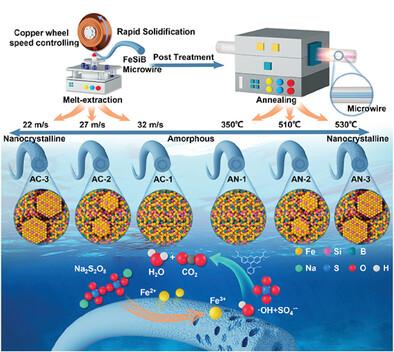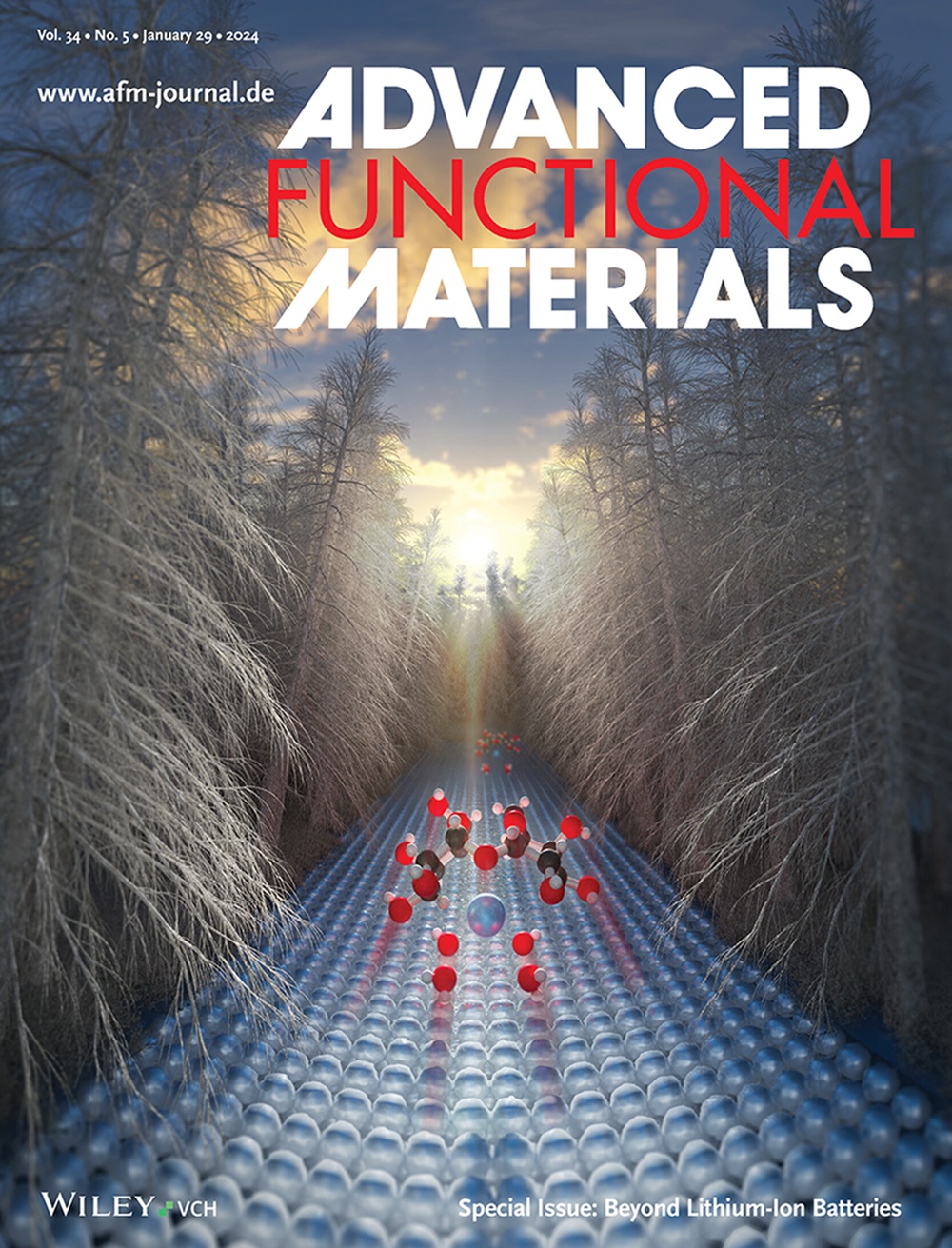IF 18.5
1区 材料科学
Q1 CHEMISTRY, MULTIDISCIPLINARY
引用次数: 0
摘要
水资源的可持续管理是一项严峻的全球性挑战,而高级氧化工艺则是解决环境水污染问题的一种前景广阔的解决方案。然而,现有环境催化剂在催化活性和稳定性之间的明显权衡阻碍了它们的广泛应用。本研究开发了一种纳米晶/无定形(N/A)微丝催化剂,其设计特点是在保持纯无定形基质的同时调节纳米晶尺寸。与结构松弛的脆性退火不适用微丝不同,铸造不适用微丝在高级氧化过程中表现出卓越的催化性能。它们可以在 60 秒内完全降解污染物,并在长达 40 个重复使用周期内保持活性。理论计算和材料特性分析表明,非晶基体中存储的残余应力以及纳米晶体和非晶相之间的协同效应共同作用,使得无氮压铸微丝具有卓越的性能。此外,最佳尺寸的纳米晶相优化了原子排列,形成了低原子配位数的原子结构,提供了丰富的活性位点。这种设计还增强了过硫酸盐的吸附特性,加速了电子转移。这些发现为开发高效稳定的废水处理催化剂提供了一个新颖的设计框架。本文章由计算机程序翻译,如有差异,请以英文原文为准。

Catalytic Mechanism of Nanocrystalline and Amorphous Matrix in Fe-Based Microwires for Advanced Oxidation
The sustainable management of water resources is a critical global challenge, with advanced oxidation processes emerging as a promising solution for addressing environmental water pollution. However, the clear trade-off between catalytic activity and stability in existing environmental catalysts hinders their broader application. In this study, a nanocrystalline/amorphous (N/A) microwire catalyst is developed, featuring a design that regulates nanocrystal size while preserving a pure amorphous matrix. Unlike brittle annealed N/A microwires subjected to structural relaxation, the as-cast N/A microwires demonstrate outstanding catalytic performance for advanced oxidation. They can completely degrade pollutants within 60 s and maintain their activity for up to 40 reuse cycles. Theoretical calculations and material characterizations reveal that the exceptional properties of the as-cast N/A microwires arise from the combined effects of residual stresses stored in the amorphous matrix and the synergistic effect between nanocrystals and amorphous phases. Moreover, the optimally sized nanocrystalline phase optimizes the atomic arrangement and induces an atomic structure with a low atomic coordination number, providing abundant active sites. This design also enhances the adsorption characteristics of persulfate and accelerates electron transfer. These findings offer a novel design framework for developing efficient and stable catalysts for wastewater treatment.
求助全文
通过发布文献求助,成功后即可免费获取论文全文。
去求助
来源期刊

Advanced Functional Materials
工程技术-材料科学:综合
CiteScore
29.50
自引率
4.20%
发文量
2086
审稿时长
2.1 months
期刊介绍:
Firmly established as a top-tier materials science journal, Advanced Functional Materials reports breakthrough research in all aspects of materials science, including nanotechnology, chemistry, physics, and biology every week.
Advanced Functional Materials is known for its rapid and fair peer review, quality content, and high impact, making it the first choice of the international materials science community.
 求助内容:
求助内容: 应助结果提醒方式:
应助结果提醒方式:


